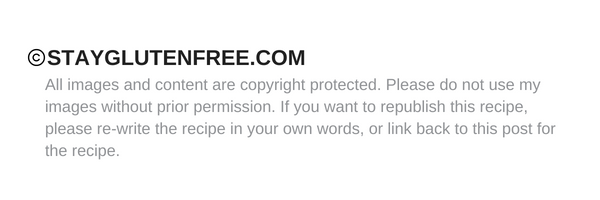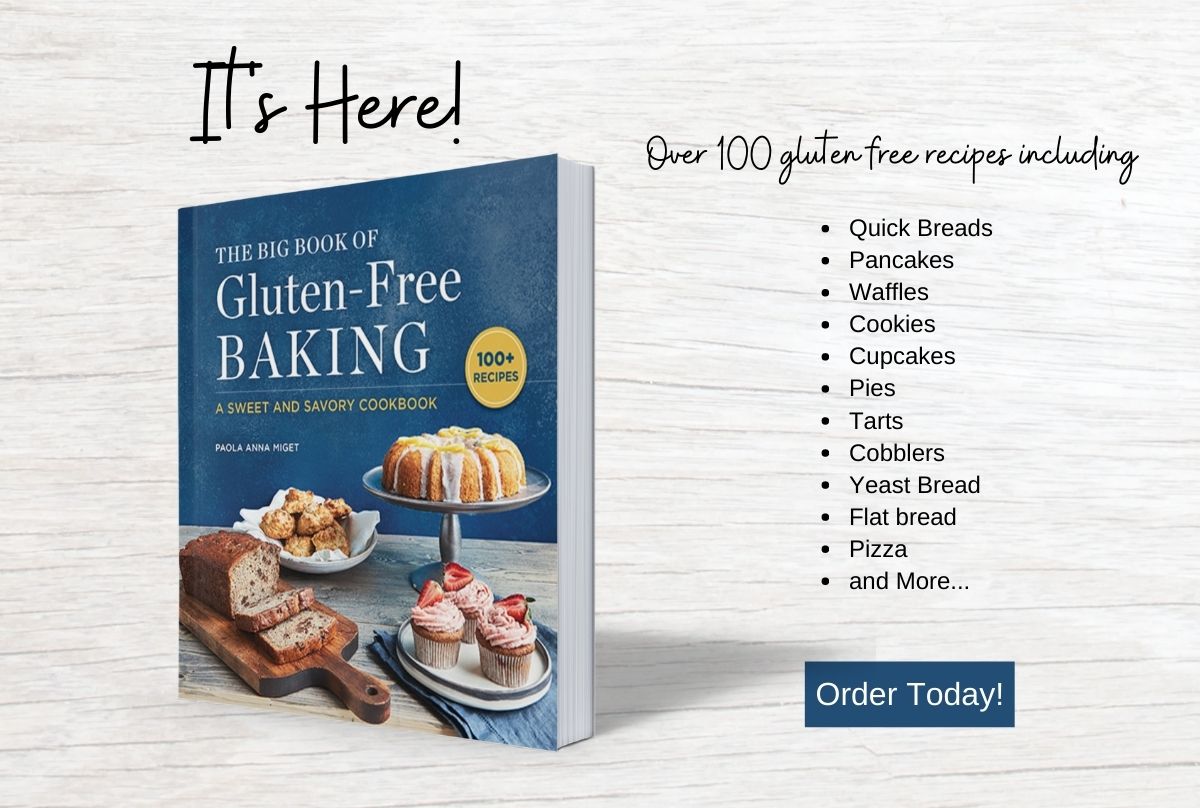What is xanthan gum anyway and why do we need to use it?
Xanthan gum
Xanthan gum is a food additive that is commonly used as a thickening agent (in food) and as a stabilizer (in cosmetics to prevent the ingredients from separating). It is produced from a bacteria called xanthomonas campestis. Often the substances used to grow this bacteria are wheat, corn, soy or dairy. Use caution when selecting which brand to buy. I use Xanthan gum the most and have had great luck with Bob’s Red Mill brand. The chart below can help you add xanthan based on what you’re baking.
Bread, pizza dough add 1 tsp per cup of flour
Cakes, muffins, quick breads add ½ tsp per 1 cup of flour
Cookies and bars add ½ tsp (or less) per 1 cup of flour
The “gum” in general in a recipe is what will thicken your batter and often enhances the texture of your baked goods as well. Gums mimic the properties of gluten and are an important addition to gluten free baking. Xanthan and Guar are the two most commonly used among gluten free bakers.
Today, many gluten free flours already have gum included them. But there are still some that don’t. I didn’t include it in my signature blend because I have learned that certain baked goods do better with a little more and others do better with a little less.
If your “all-purpose” gluten free flour blend does not have a gum in it already, you should add it, and in general you should add 1/4 tsp per 1 cup of gluten free flour. Below there is another chart that is even more specific.
What if you cannot tolerate xanthan gum?
Some people cannot tolerate xanthan gum and have to use something else, or they even attempt baking without any “gum” at all. This can be a disaster and the reason why so many people fail at gluten free baking one or two times and then give up.
Since my mission is to deliver gluten free food and baked goods that mimic the foods we missed most, I have to advocate for the use of what I have found that works best, even if what it is does sound awful. Thankfully, we really don’t need all that much of it.
But if you truly cannot tolerate xanthan gum, there are 2 other things you can use. But I haven’t dabbled much with either of them. As a family we have found psyllium husk to be way too hard on our stomachs so I had to let that one go pretty quickly.
Guar gum
Guar gum is also called guaran and is made from guar beans which has thickening and stabilizing properties most often found in food. If someone cannot tolerate xanthan, they may choose to use guar gum instead.
Psyllium husk
Psyllium husk is made from the husks of the “Plantago Ovata” meaning a plant’s seeds. It can also be referred to as ispaghula and is commonly known to be a great source of natural fiber. It can also be great for baking bread. Since some people cannot tolerate gums this can be a good alternative solution.
There are other things you can use such as chia seeds, flax seeds and milk powder but for the sake of saving time I wanted to include the most common things you will find when you’re shopping and in most recipes.
Below is another chart I found that you can also find on Bob’s Red Mill website. I like to have all my information in one place so I wanted to add it here too. I hope all of this information will help you should you use my special flour blend in more than just the recipes in my cookbook.
| Xanthan Gum | ||
| Cookies | 1/4 | teaspoon/cup |
| Cakes & Pancakes | 1/2 | teaspoon/cup |
| Muffins and Quickbreads | 3/4 | teaspoon/cup |
| Breads | 1-1 1/2 | teaspoon/cup |
| Pizza Dough | 2 | teaspoon/cup |
| As thickener in liquids | 1/2 | teaspoon/ 8oz of fluid |
| Guar Gum | ||
| Cookies | 1/4-1/2 | teaspoon/cup |
| Cakes & Pancakes | 3/4 | teaspoon/cup |
| Muffins and Quickbreads | 1 | teaspoon/cup |
| Breads | 1-2 | teaspoon/cup |
| Pizza Dough | 1 | teaspoon/cup |
| Gravies & stews | 1-3 | teaspoon /quart |
| Ice cream & pudding | 1-2 | teaspoon /quart |
If you have a something you use in place of the gums or have a certain amount you have found works best for you in any particular baked good I’d love for you to share it in the comments below. The more information we have the better, right? We are all in this together.
Talk soon!
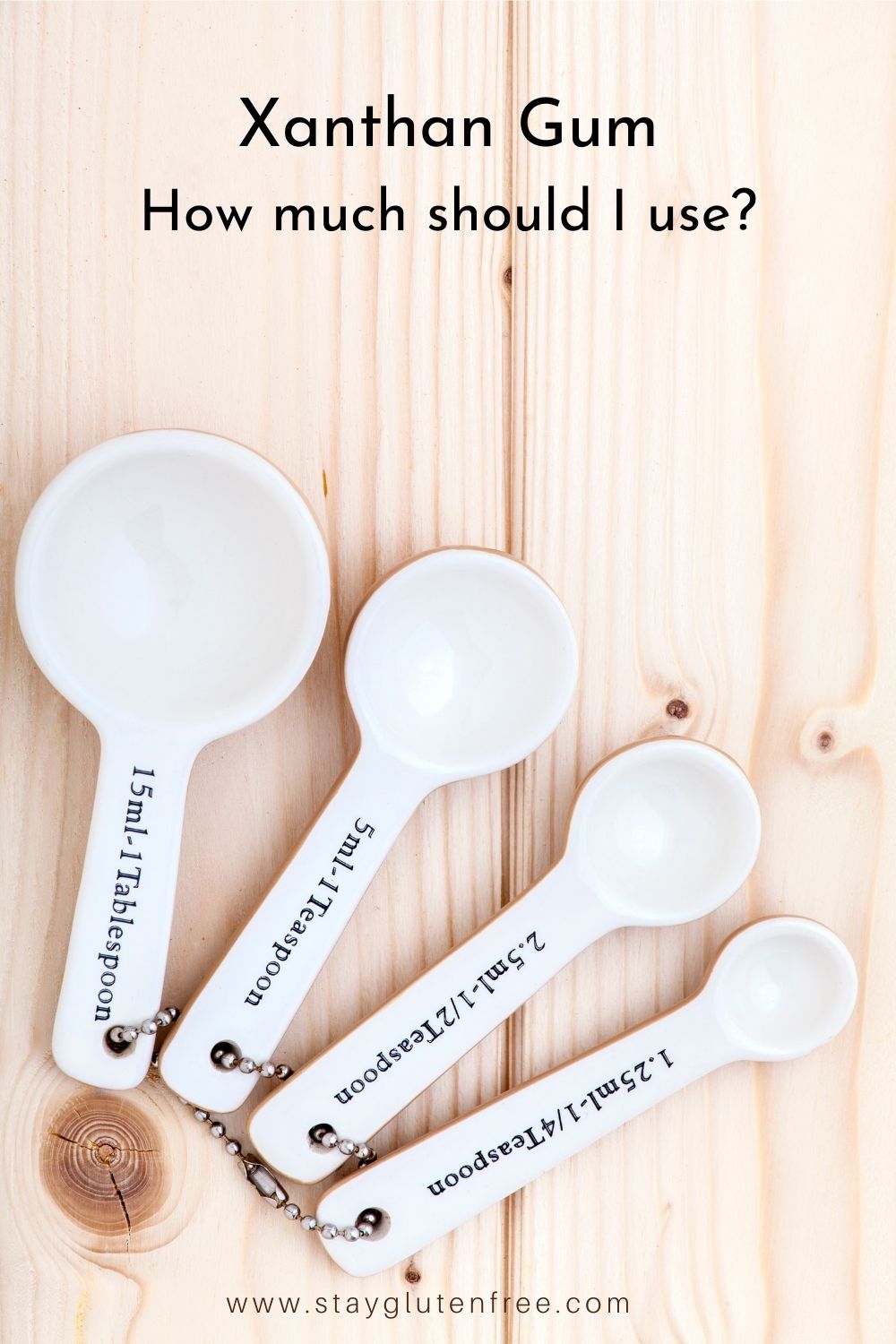
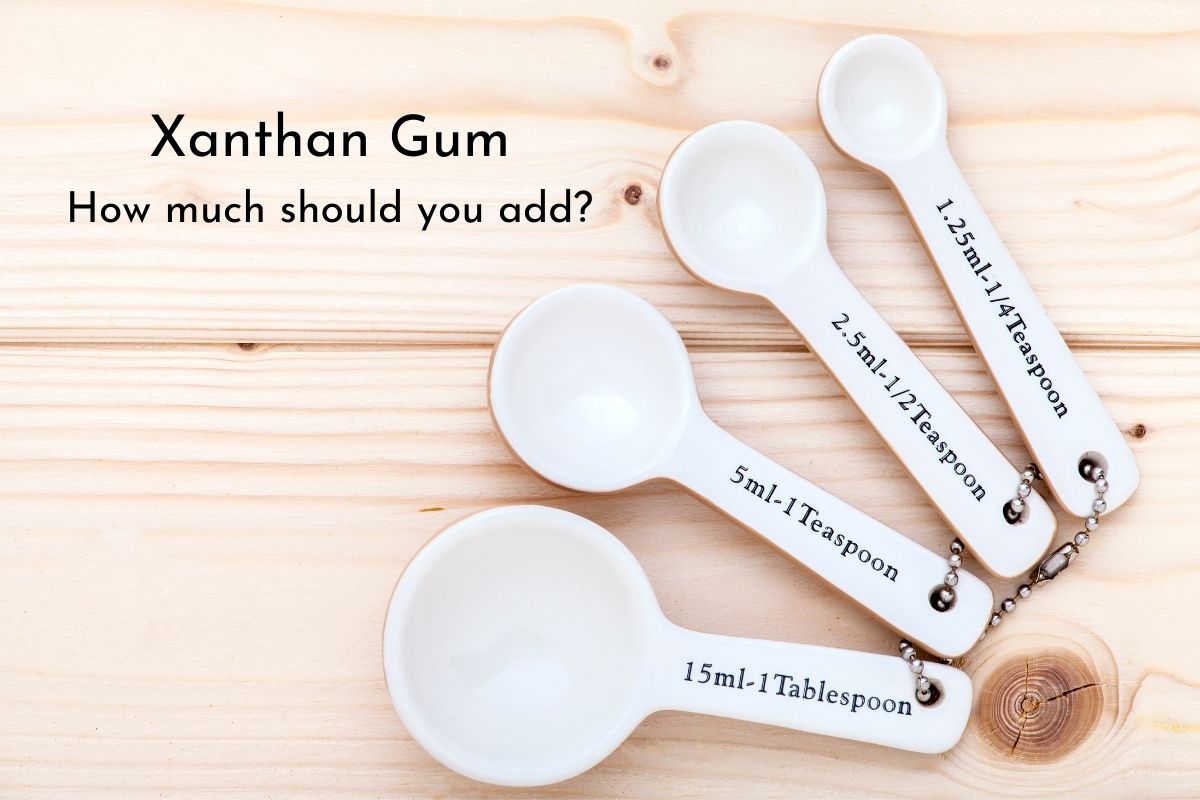
How Much Xanthan Gum Should You Add?
What is xanthan gum anyway and why do we need to use it? Xanthan gum Xanthan gum is a food additive that is commonly used
Search for more recipes here


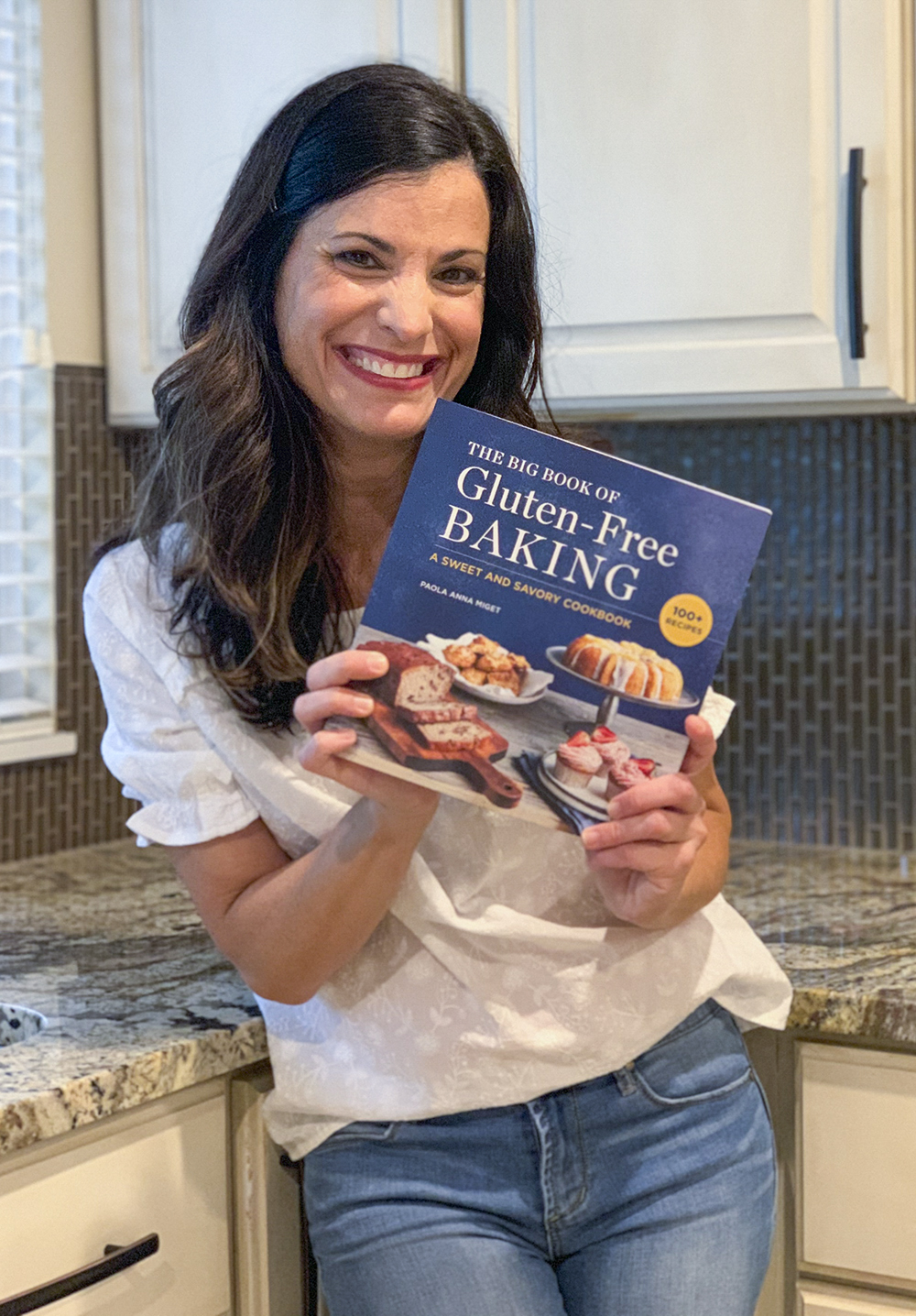



Paola Anna has helped thousands of people live a delicious gluten free life. Her gluten intolerance and her boys’ food allergies have inspired her to be an advocate for the gluten free community and create recipes that the whole family will love. You can sign up to be a Gluten Free Insider at her website stayglutenfree.com
